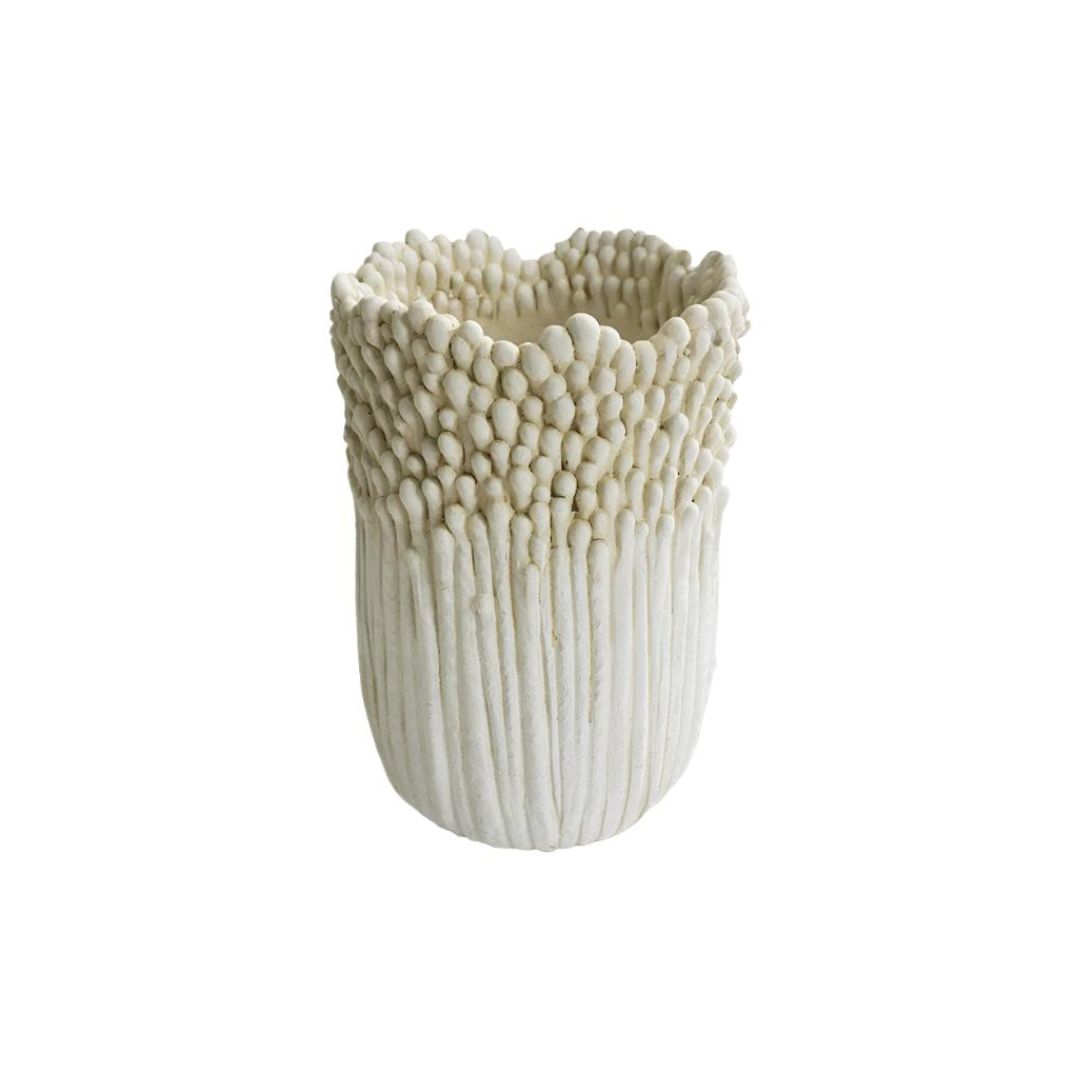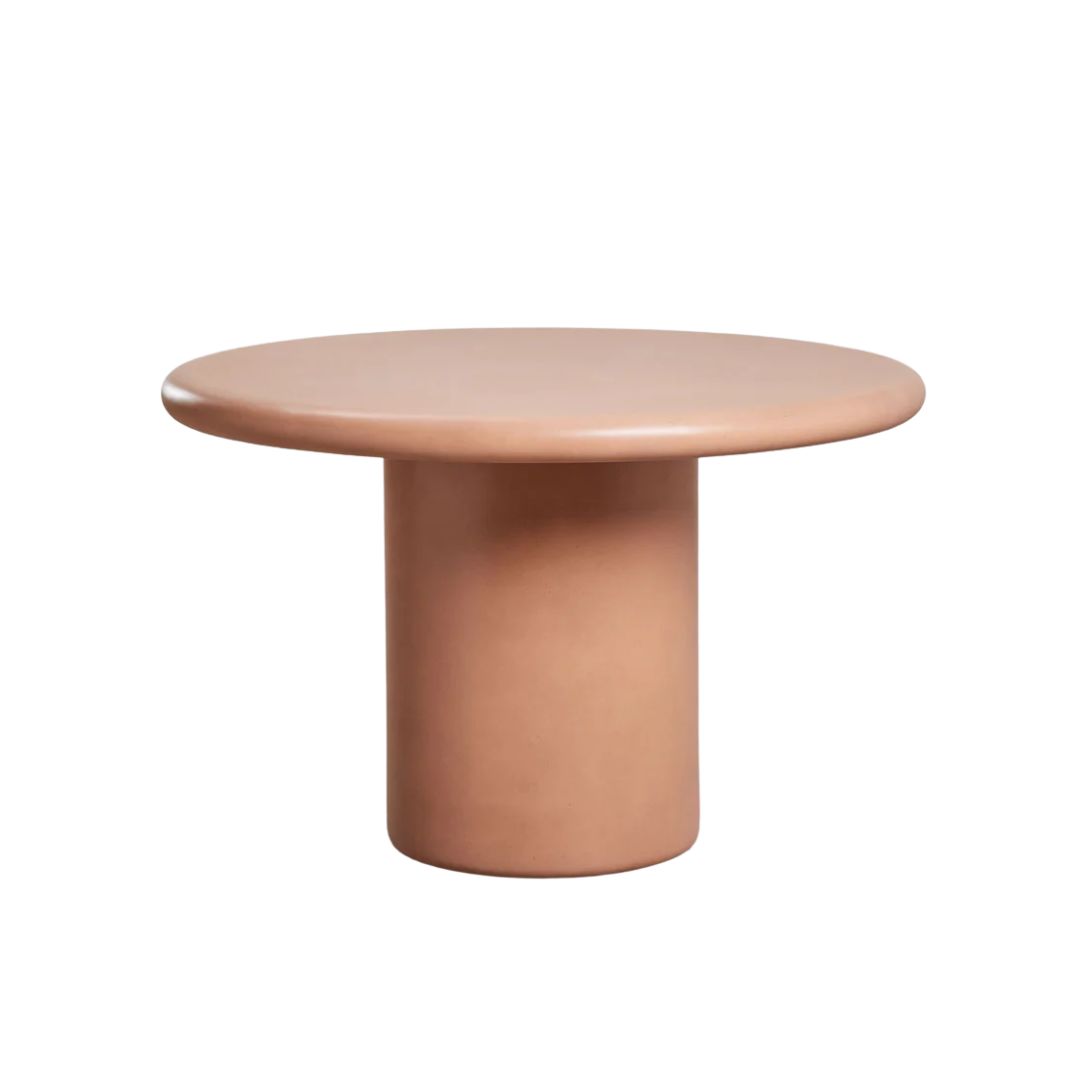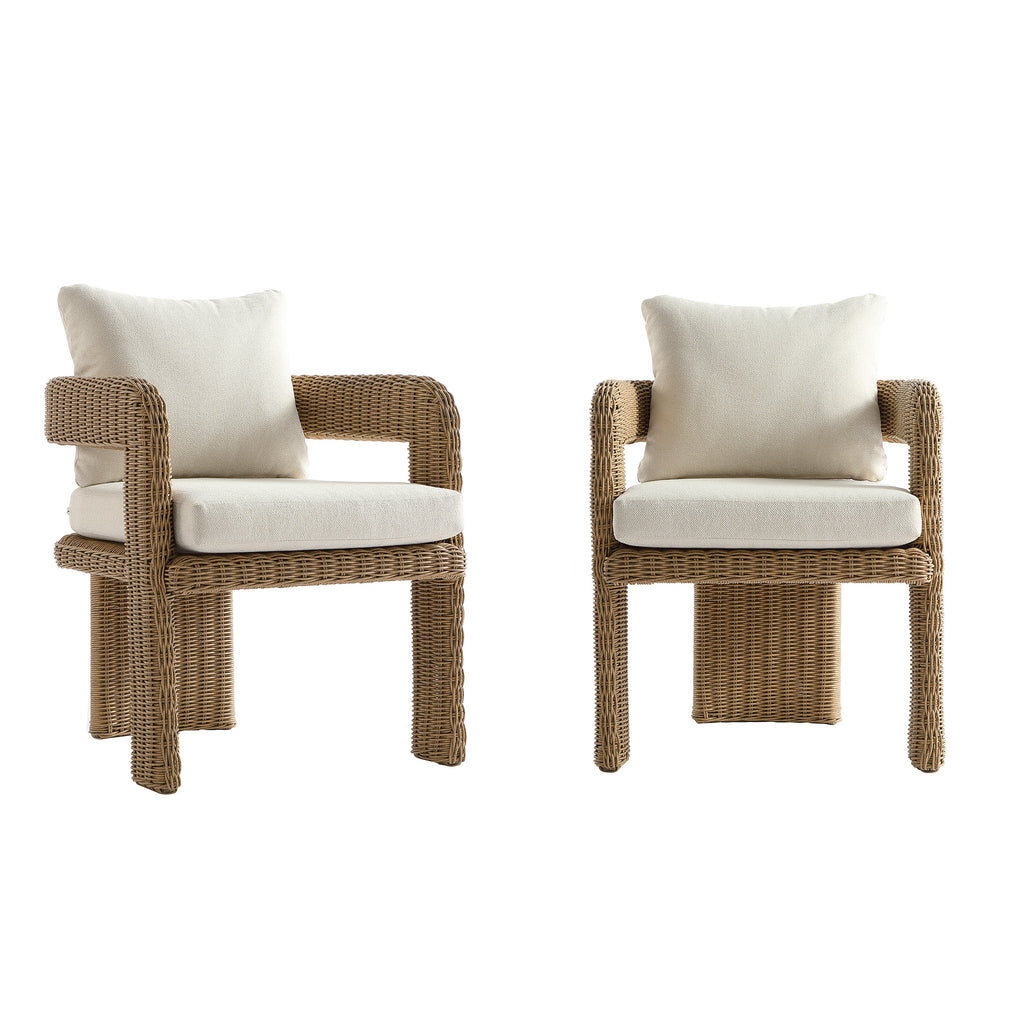10 Ways to Bring Privacy to Your Deck so You Can Enjoy a Summer Outside Without Being Overlooked
Discover the different ways architects, designers, and landscapers provide privacy for outdoor decks in their projects
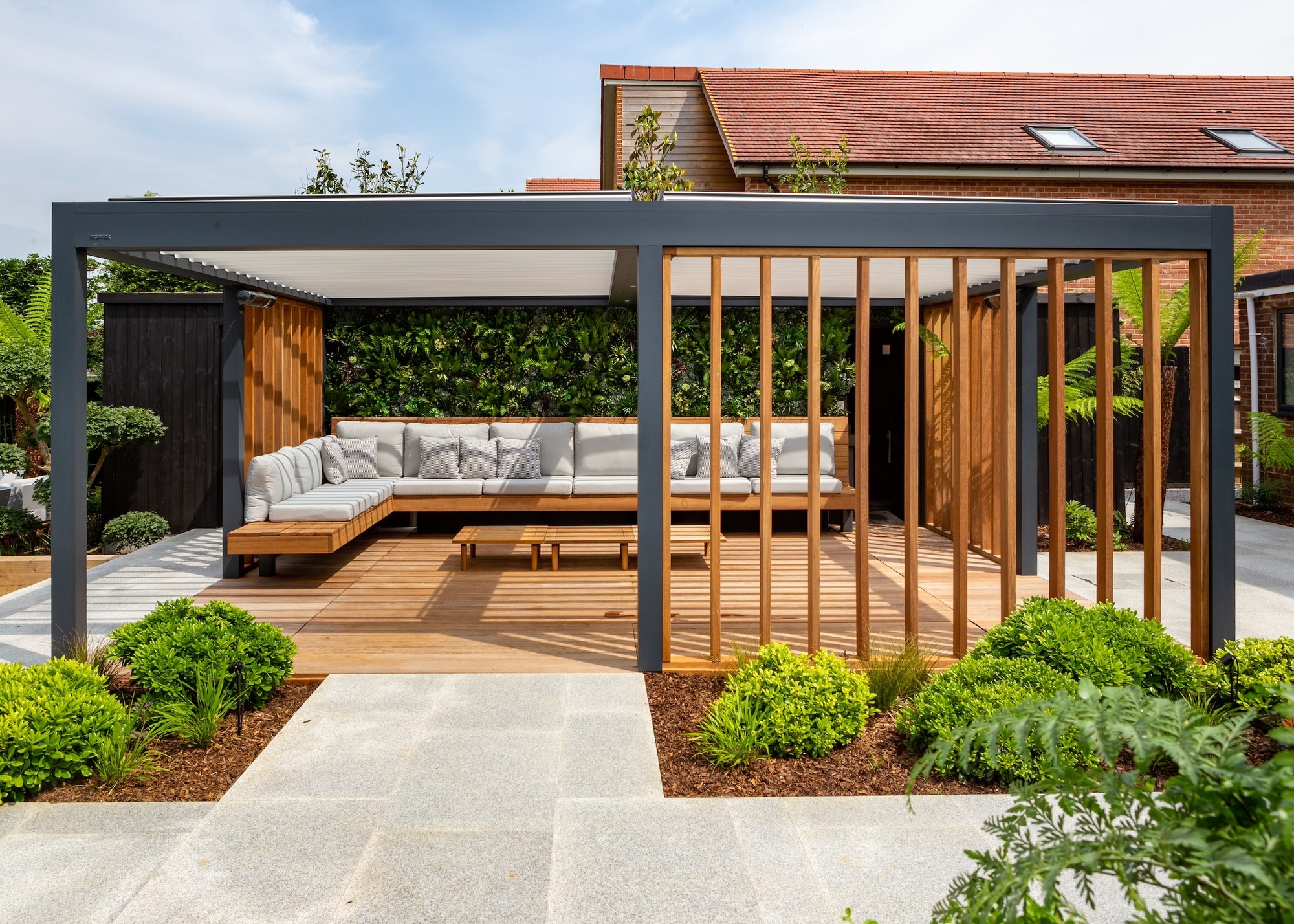
Some of the most beautiful deck privacy ideas we've seen have been carefully considered from the get-go and designed to blend with the architecture of the house and the garden. Yet that doesn't rule out a stylish solution for your deck, if it is feeling exposed, and you want to add more garden screening for privacy retrospectively.
The deck ideas ahead, from architects and landscape designers, provide plenty of inspo for making your deck a more secluded spot. Whether you're drawn to something simple and modern, elegant and luxe or beautifully rustic, there is much to admire and emulate.
Peruse the suggestions ahead and decide which will suit your space, style and budget the best.
1. Install a Slatted Timber Wall With an Angled Roof
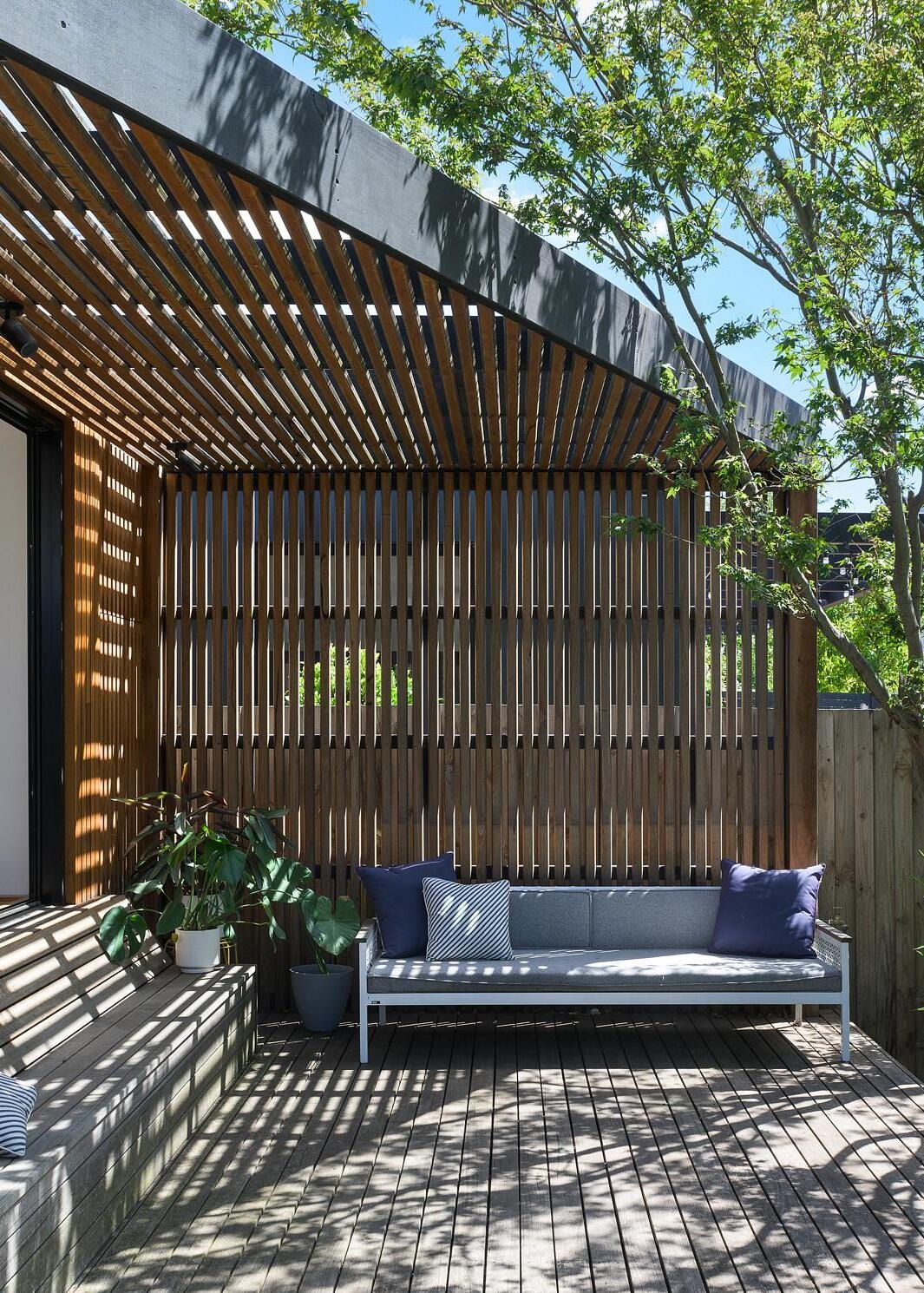
This angled roof provides just the right amount of shade.
Striking the right balance between sun and shade on your deck takes thoughtful consideration. Too much shade and you may as well be indoors, too little and you can quickly fry under intense rays. This project by Ben Callery Architects hits the spot with just enough of each, with its slatted timber panels and angled roof, resulting in an inviting, enclosed deck that's ideal for summer lounging or entertaining in a modern garden.
"At our 'Breeze House' project, the timber slats offer summer shade with dappled ambient light," says Ben Callery, founder of Ben Callery Architects. "Angled in the plan, the pergola roof provides more shelter at the deeper end and a spot in the sun at the shallower end.
"The slats wrap down on the side to provide some privacy from next door and increase the sense of shelter to people sitting beneath. Although providing shelter, the slats still let cooling breezes and natural light through, making it a tranquil space to occupy."

Ben Callery is the founder of Ben Callery Architects, a small studio based in Northcote, Victoria on Wurundjeri land in Australia. The practice is registered with The Architect’s Registration Board in Victoria; are A+ members of the Australian Institute of Architects and members of ArchiTeam Cooperative. They are also members of the Australian Passivhaus Institute and are certified Passive House Designers.
2. Include a Flat Roof Overhang
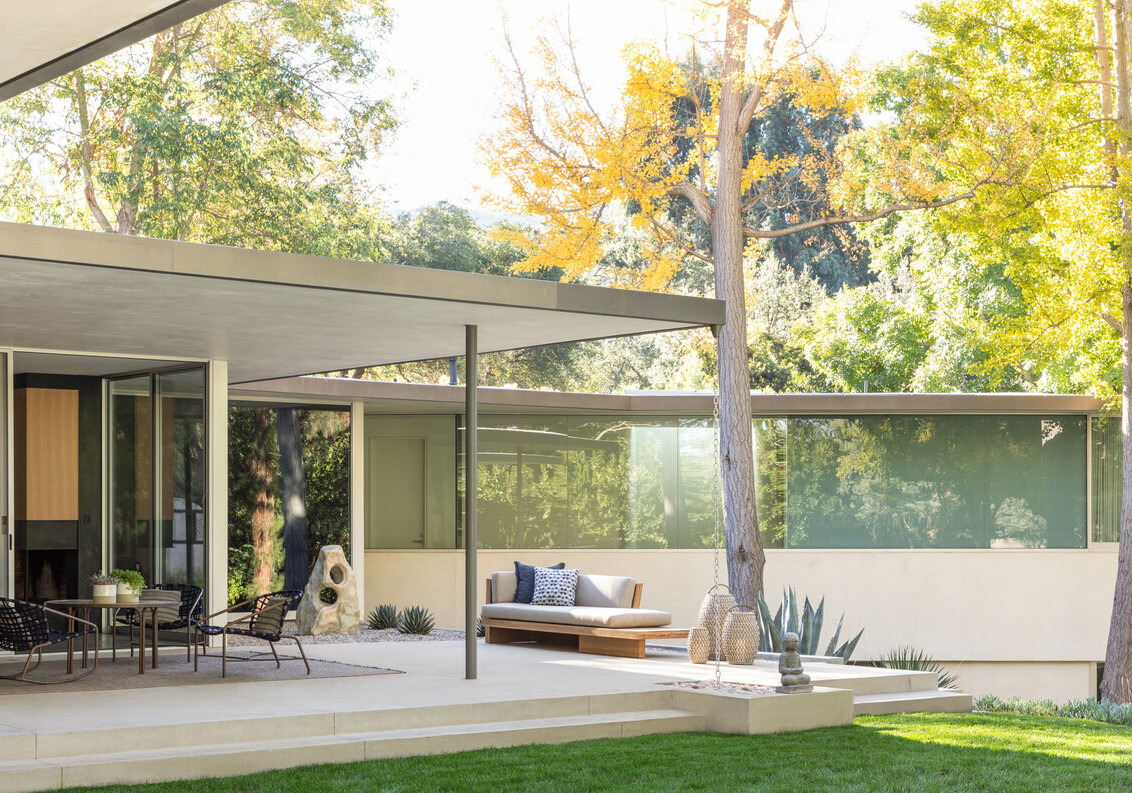
The structure of the building creates privacy and cooling on this deck.
Part of its original mid-century design, the flat roof overhang on this property protects the indoor and outdoor spaces from an excess of heat from the sun, while also obscuring any potential overlooking from nearby properties on the deck beneath.
The Livingetc newsletters are your inside source for what’s shaping interiors now - and what’s next. Discover trend forecasts, smart style ideas, and curated shopping inspiration that brings design to life. Subscribe today and stay ahead of the curve.
Extending the style of a flat roof on a single-storey property over a terrace or deck is an elegant privacy option, as it blends the architecture of the house with that of the outdoor space, particularly when the same materials are used. The slender steel support pole ensures the deck feels open and airy, too.
If you're planning a backyard kitchen extension, consider including a flat roof overhang above your deck area.
3. Opt for a Simple Overhead Structure

A simple structure offers overhead screening.
Modern pergola ideas can be as sophisticated or as simple as you like. An option that manages to be both is an overhead canopy that is attached to the rear of your property at one end and sits on a frame at the other.
"A simple overhead frame can work magic — visually anchoring your deck while providing overhead privacy and screening," says landscape designer, Kat Aul Cervoni, founder, Staghorn Living.
"Bonus points for it being able to support climbing vines such as akebia, wisteria or clematis, as well as outdoor lighting."

Landscape designer, Katherine "Kat" Aul Cervoni is the founder and principal of Staghorn Living. Kat creates outdoor spaces that become natural extensions of a home’s interior. A member of the Ecological Landscape Alliance and the Association of Professional Landscape Designers, she also mentors young plant enthusiasts and upcoming designers.
4. Add a Metal Pergola With a Retractable Roof
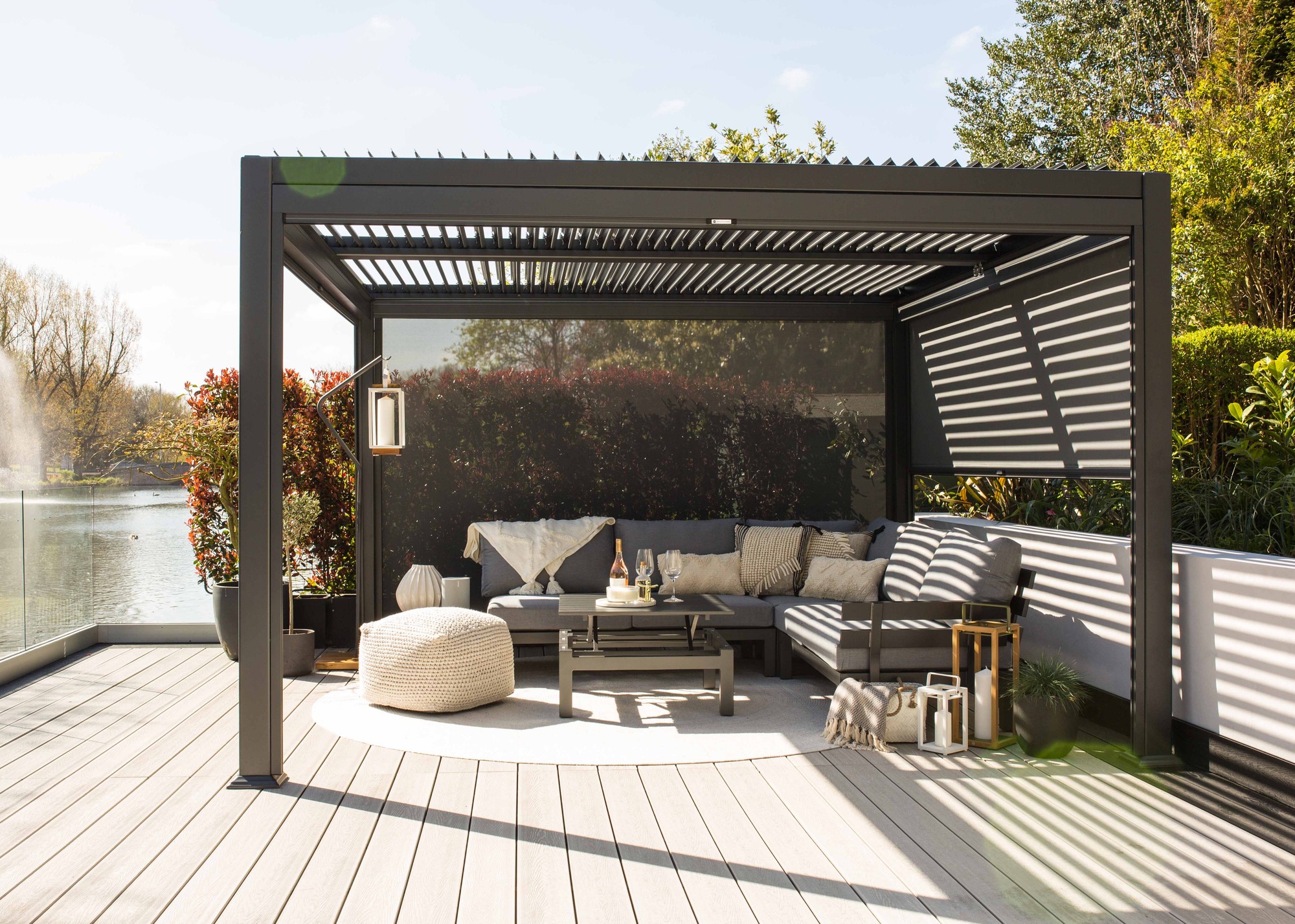
Louvred screens allow as much or as little privacy and shade as you want.
The number of different pergola ideas available is vast. If you're not planning any structural work on your home's exterior or would rather not attach anything to the outside walls, a modular, ready-to-install roofed metal pergola is a smart and straightforward option. These structures tend to come in set sizes with customisable features, such as the number of louvred screens you wish to add.
"One of the key trends we are seeing coming to the forefront for 2025 is customisation through modular options, especially for the luxury market," says Reilly Gray, co-founder, Suns Lifestyle.
"For homeowners, choosing 'off-the-shelf' designs is no longer enough, with them instead looking to invest in outdoor living solutions that can be tailored to their exact needs, whether it's outdoor structures, kitchens or even furniture."
5. Include Integrated Side Screens on a Bespoke Pergola

A bespoke pergola with side screens can obscure views and blend with surrounding architecture.
A more luxurious option is a bespoke pergola, built to your exact specifications with materials that complement your home and garden. This is obviously a pricier route, but it will deliver a made-to-measure solution, overseen by experts.
"Pergolas, canopies and other overhead structures are an excellent way to create secluded spots in the garden," says Mark Latchford, Director of Landscape Design, HollandGreen. "These can be tailored to match your aesthetic — whether sleek and contemporary or more traditional in feel.
"For extra comfort and usability, consider options with automated louvre roofs or integrated side screens to provide shade, shelter, and a cosy, enclosed atmosphere."

Mark Latchford is an award-winning Landscape Design Director at HollandGreen, where he leads a dynamic team of landscape and garden designers. Renowned for his ability to create holistic and transformative outdoor spaces, Mark’s designs foster a deep connection between people and nature, providing the perfect backdrop for lasting memories and moments of well-being.
6. Create a Sunken Seating Area
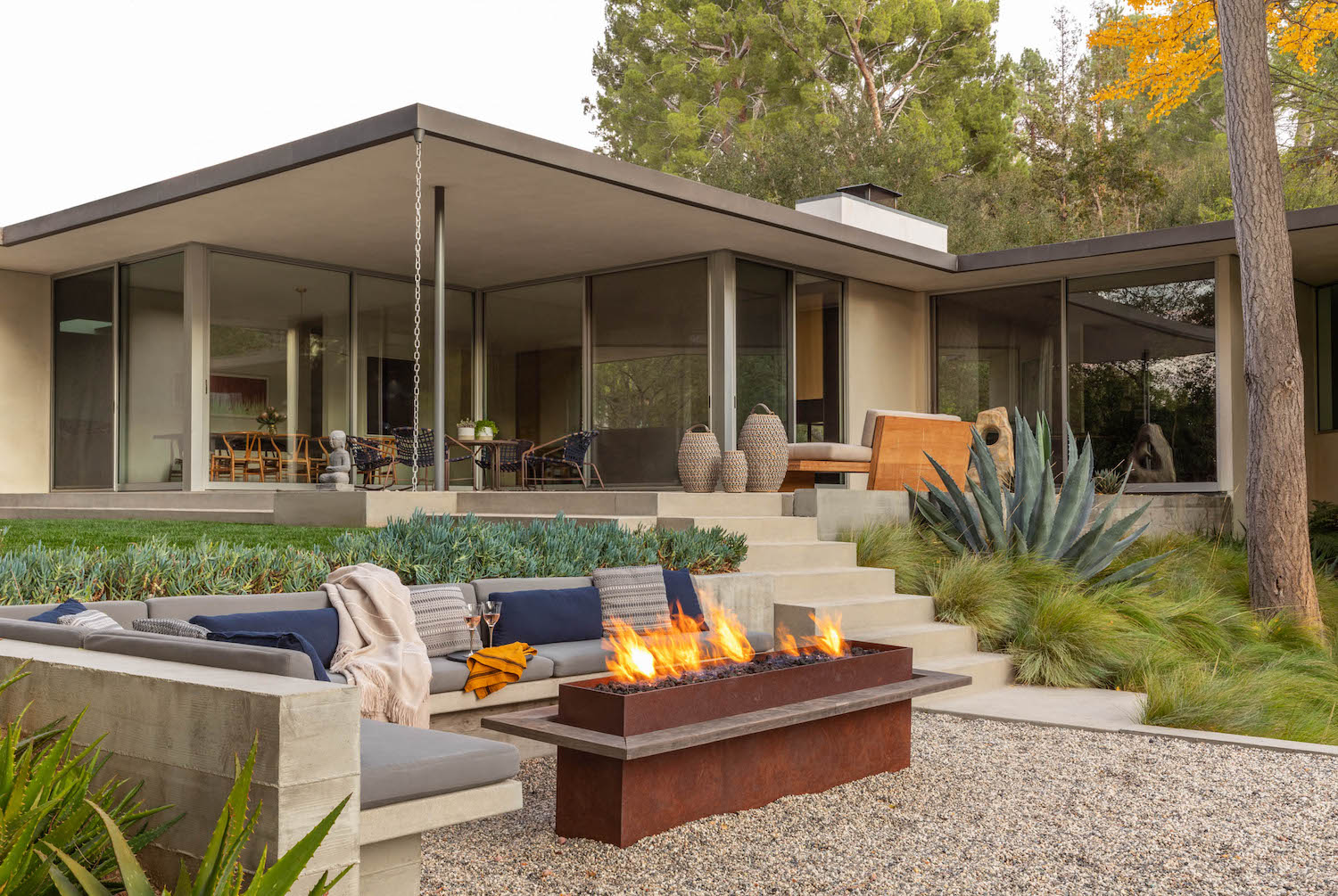
A sunken deck offers a discreet hideaway.
'Conversation pits' are a trend that is not just for indoors. In fact, if your garden is made up of different levels, a stylish solution for privacy is to create a lower deck outside with a sunken fire pit. This is a good option if you want to create separate privacy areas for two decks, such as an outdoor lounge area for adults and another for teens.
"Lowering part of your garden — particularly seating areas — adds a clever layer of privacy," says Mark. "By stepping down into the landscape, the surrounding boundaries appear taller, helping to shield the space from neighbouring views, dampen noise, and block the breeze.
"A sunken garden also opens up creative design opportunities: think built-in benching that doubles as retaining walls, or sunken fire pits that draw people together for evening gatherings."
7. Plant a Row of Pleached trees
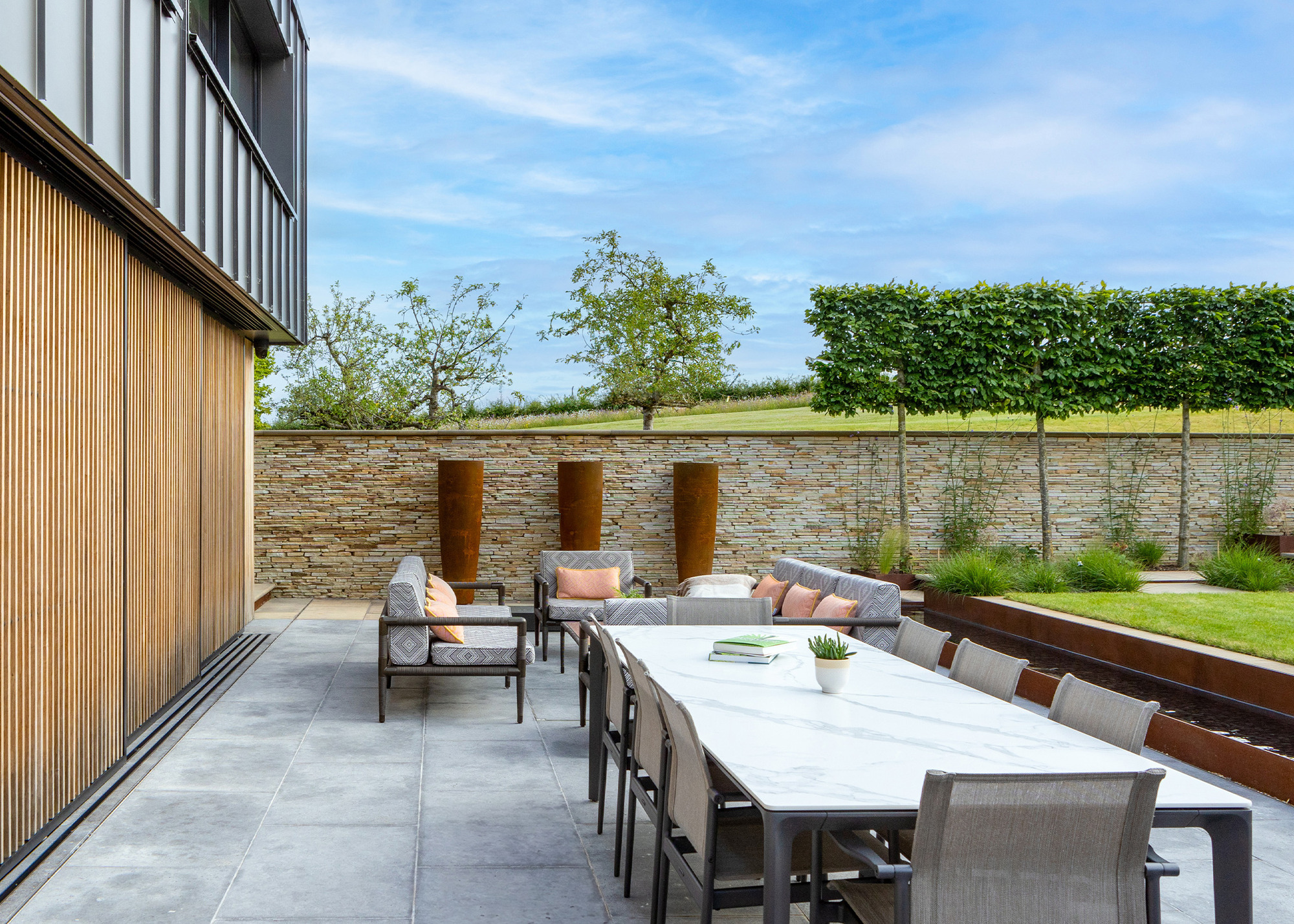
Pleached trees are a popular option for landscapers.
Loved by landscapers and modern garden designers for their elegant aesthetic and ability to provide privacy, a row of pleached trees is a subtle and sophisticated way to prevent views onto your deck or patio from beyond your property perimeter.
"Pleached trees — trained with a clear stem and a neatly clipped, rectangular canopy — are a smart and stylish way to introduce privacy around an outdoor deck," says Mark. "Their elevated foliage acts as a natural screen, shielding you from overlooking windows or nearby rooftops while still allowing light and sky views to filter through.
"Ideal species for pleaching include Fagus sylvatica (Beech), Carpinus betulus (Hornbeam), and Acer campestre (Field Maple) — all native to the UK and well-suited to this structured style.
"I'm a massive fan of overcoming problems around the garden with the use of plants," says landscape gardener, Paul Studholme, founder, The Plant Hunter. "Let's be honest, they are the main event in any garden and are what gives you the most interest and pleasure. Pleached or espalier trees are a fantastic way to provide an instant privacy screen.
"Heights will vary from around 2m to 4m and there are plenty of evergreen options, such as Photinia, Ligustrum, Ilex and Magnolia, as well as the classic Hornbeam (Carpinus) which will drop its leaves in the winter."

Paul has been passionate about plants since he was a teenager. For the last 30 years he has designed gardens for his clients, where plants are the stars of the show, specifically selected to complement hardscaped areas, to create a natural, plant-focussed haven.
8. Train Climbing Plants Over Fences and Trellis
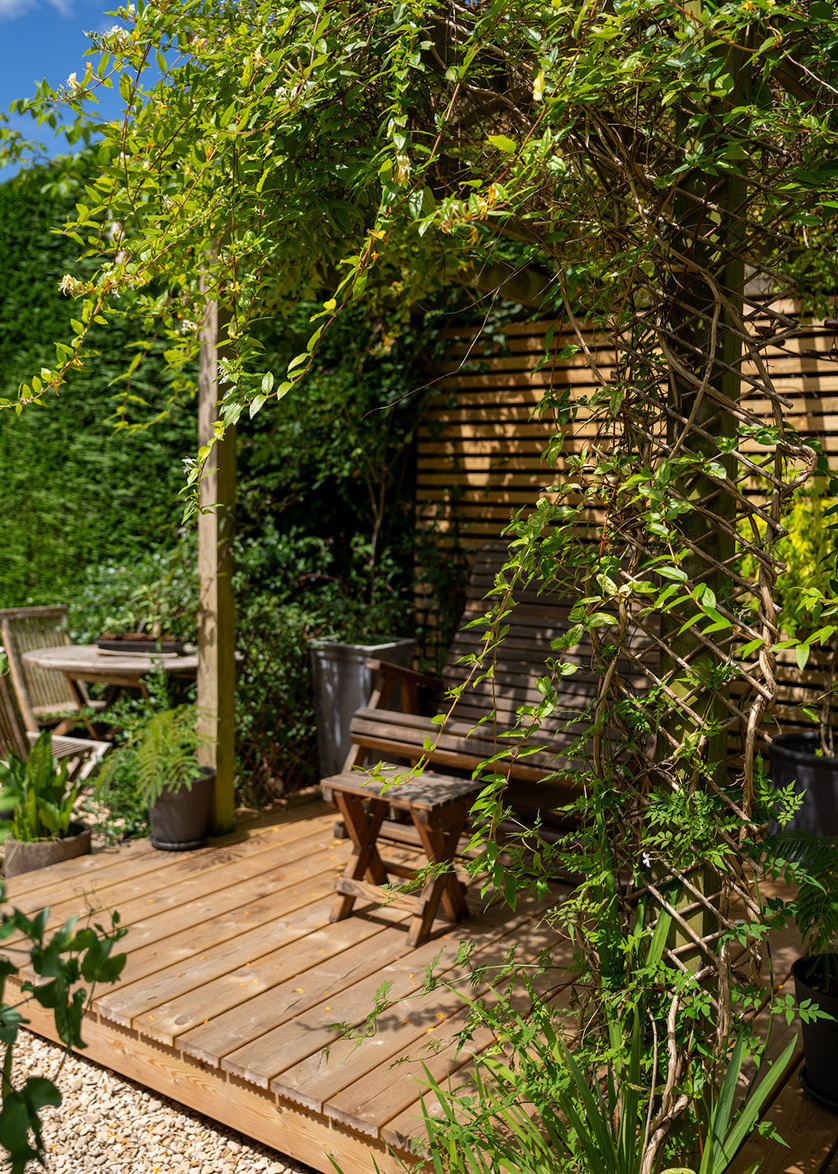
Create 'secret garden' vibes with climbing plants.
Hardscape materials, such as decking, privacy fences, and other outdoor structures, need to be balanced with plenty of plantings; otherwise, a garden can look lifeless and lacking in personality. Thankfully, fences, walls, trellis and panels provide a frame for fast-growing climbing plants to wrap themselves around. This not only brings life and soul to your landscape, it increases the amount of privacy on your deck and in your garden, whilst also supporting its ecology.
"It's important to ensure that any structure in your garden blends with the surroundings and doesn’t look like its landed from space," says Paul. "This is particularly important with deck areas, as they tend to sit slightly higher than the surrounding ground and can quite easily take on the look of a stage. Creating an element of privacy around the deck with plants eliminates the 'just landed' look and also gives the space a cosy feel, blocking views from neighbours, or your own house.
Paul continues: "Trellis or batten panels installed to one or more sides of a decked space, at whatever height you feel is adequate, is a simple and cost effective solution. You can then grow climbing plants up them like Trachelospermum jasminoidies or Honeysuckle which will reward you with wonderful scents in the summer. This works particularly well if you integrate it into a pergola over the top of the deck."
9. Screen the Perimeter With Mixed Plantings
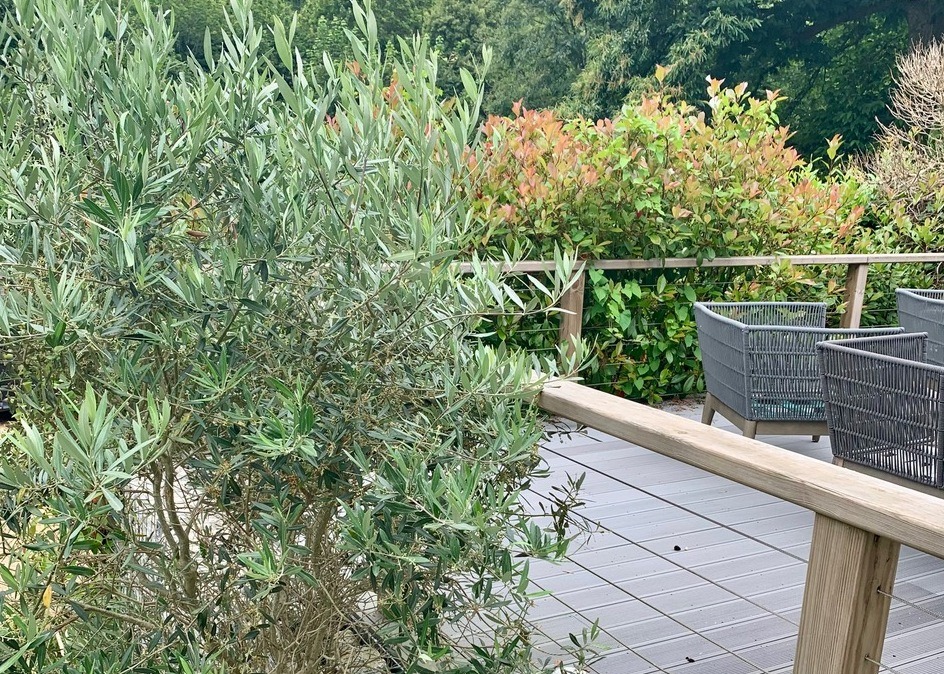
Soften the hardscape with trees, bushes and shrubs.
Of course, it's not just climbing plants that can provide privacy; trees, shrubs and grasses can too. Surrounding your outdoor decking area with tall plants, rather than more hardscape materials, for privacy softens the space and gives your garden a much more relaxed and natural look.
"My preferred solution for deck privacy is the use of a mixed planted bed in the area you want to screen," says Paul. "Depending on the space available, this can be as narrow as 50cm or much wider, running into several meters.
"The shape can be designed to work with the rest of the garden, so curved or straight lines–you then have the opportunity to play around with several different types of plants with varying heights and texture, to create a really interesting look that will change throughout the seasons."
Paul suggests "starting with a main focal point, so a tree or multi-stemmed shrub (eg. Betula Utilis/Amalanchier lamarkii) then work the height around it using tall shrubs and grasses, such as Photinia, Pittosporum, Calamagrostis and/or /Molinia to block the areas where you are overlooked. You can then layer the smaller plants to the edges."
10. Install An Awning to Prevent Being Overlooked
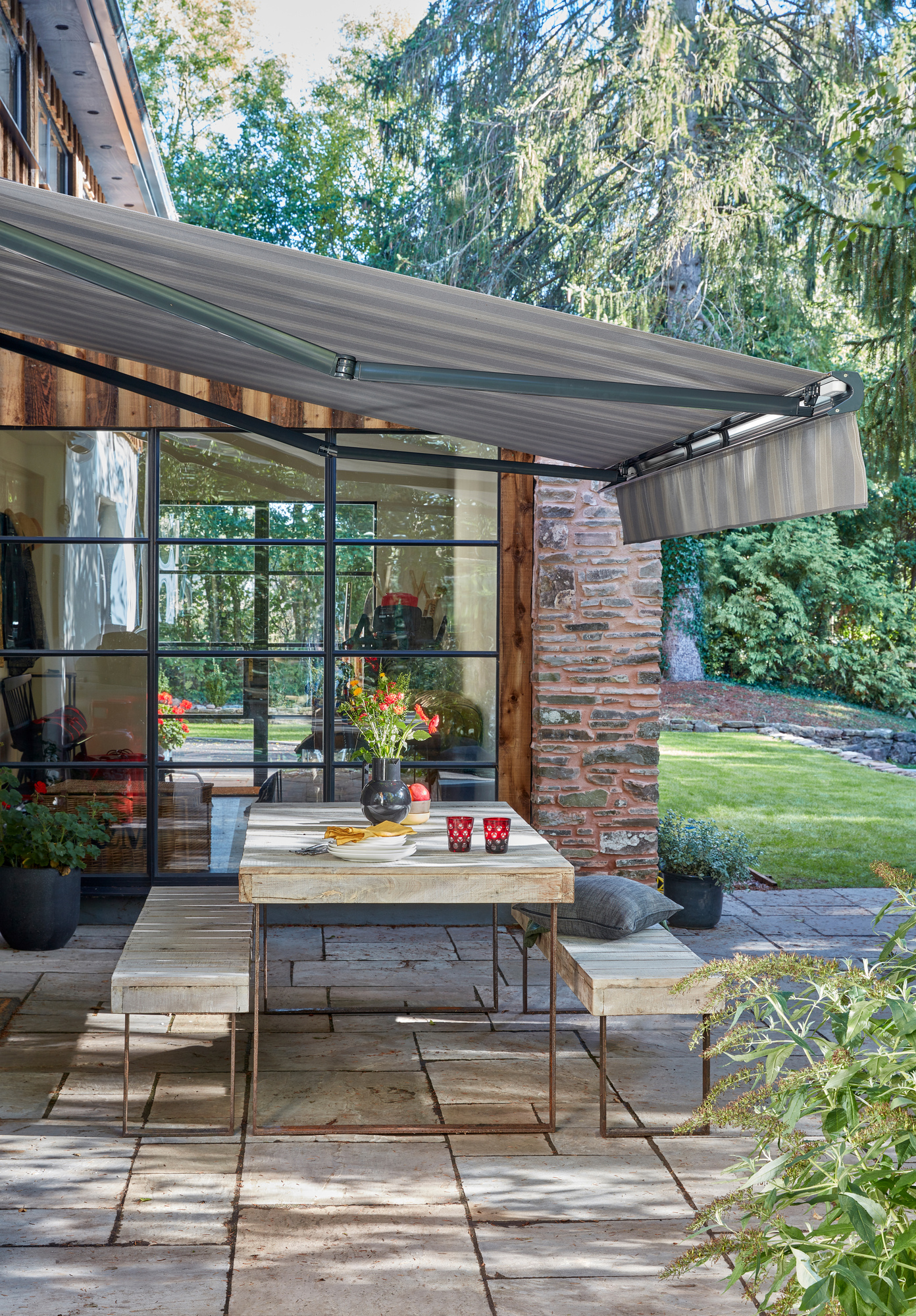
Privacy and shade at the push of a button.
One of the simplest, least obtrusive ways to add privacy and create patio shade when you need it is to fit an awning to the exterior of your home. The best place is usually above a window or sliding doors beside your outdoor dining area. This prevents overlooking from neighboring properties and offers respite from the sun. The beauty of an awning is that it won't cast shade in your home in the winter, when you don't want it to, as it can be easily retracted when not required.
"Retractable awnings offer on-demand shade, allowing you to enjoy full sun or cozy shelter and privacy with the simple push of a button," says Nina Lichtenstein, interior designer and founder, Nina's Home Design. "They’re functional yet sleek, perfect for homes where flexibility is key.
"They are best suited to patios or decks directly off the back of the house; townhouses and smaller garden spaces, and properties with transitional indoor-outdoor living designs
"Choose neutral tones like taupe, sand, or deep charcoal for a timeless look, or add a classic stripe (soft navy and white) for a coastal vibe. UV-resistant acrylic fabrics maintain their beauty longer.
"Keep hardware minimal and coordinated with your exterior finishes (e.g., matte black or brushed stainless for modern homes)."

Nina Lichtenstein is the founder and principle home designer at Nina's Home Design. For close to a decade, Nina has showcased her in-depth construction and design expertise on projects spanning the North East, where she is known for serene palettes, diverse textures, and elegant blends of stone, wood, and other natural materials.
Chic Garden Must-Haves
FAQs
What Is a Cheap Outdoor Deck Privacy Idea?
A cheap deck privacy idea in terms of cost, but not the overall effect, is to train fast-growing climbing plants over existing fences or panels. Alternatively, fit an inexpensive but sturdy timber trellis around or near your deck for vines to climb over.
"Attaching wood or metal trellis panels to one or more sides of the deck can carve out a defined boundary and provide privacy," says Kat. "These can stay open and airy such as with skinny slat style boards or become lush and private over time with vines or espaliered shrubs."
What Is the Best Material to Make Your Decking Private?
Natural materials, such as timber, will blend best with the surrounding landscape. However, noise outside carries, so you may be heard, even if you can't be seen. Trees, bushes, shrubs and tall grasses will absorb sound and muffle voices, in a way that hard surfaces cannot, which adds an additional layer of privacy.
There are multiple ways to create privacy around a deck, from trees, plants and simple pergola kits to more sophisticated structures. When deciding what is right for you and your yard, be mindful about the amount of shade your privacy ideas will cast, whether throughout the day, or year-round.
Options with retractable roofs and louvred screens, or deciduous trees and plants that drop their leaves in winter, offer more flexibility than fixed structures.
Jacky Parker is a freelance lifestyle journalist and writer, producing a wide range of features for magazines and digital platforms. She has written for Livingetc and its sister titles, Homes & Gardens and Country Homes & Interiors for more than 15 years, both as a freelance contributor and as Acting Digital Editor and Acting Style Content Editor, regularly reporting on the latest interiors, gardens and wellness inspiration, speaking to experts in their respective fields, and discovering the best tips.
Jacky has also written for other publications, including Sunday Times Style, The Telegraph, Architectural Digest, House Beautiful, ELLE Decoration, Red, Grand Designs and more.
